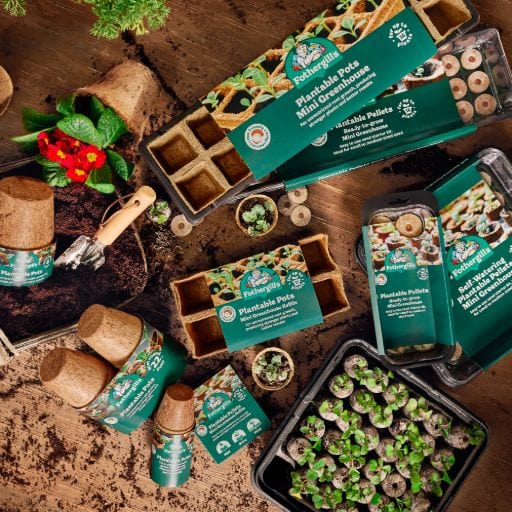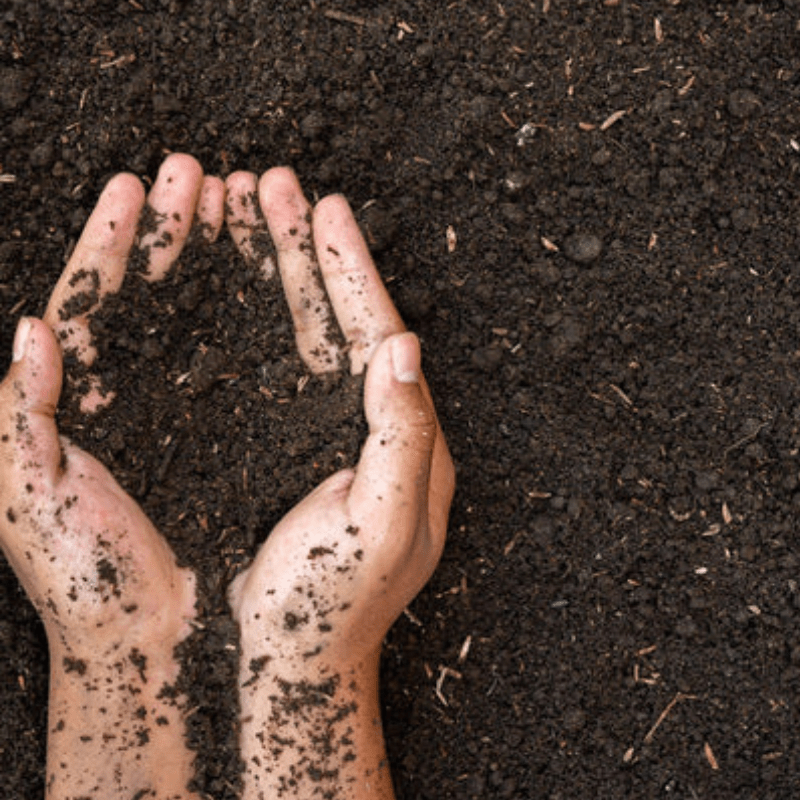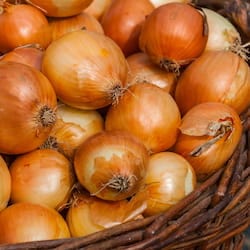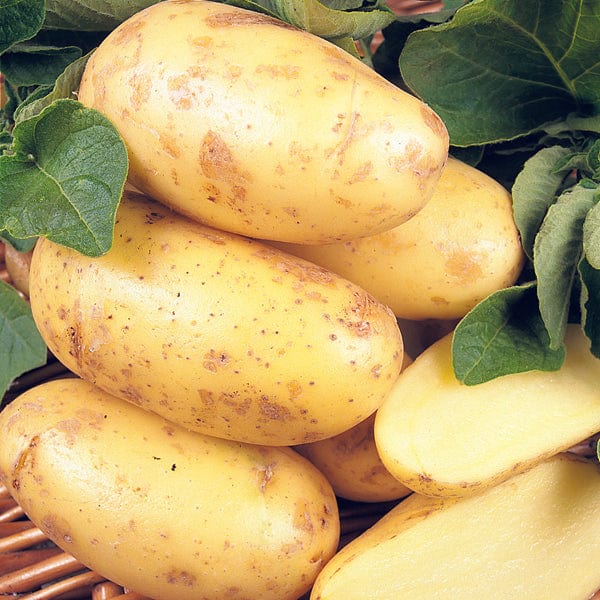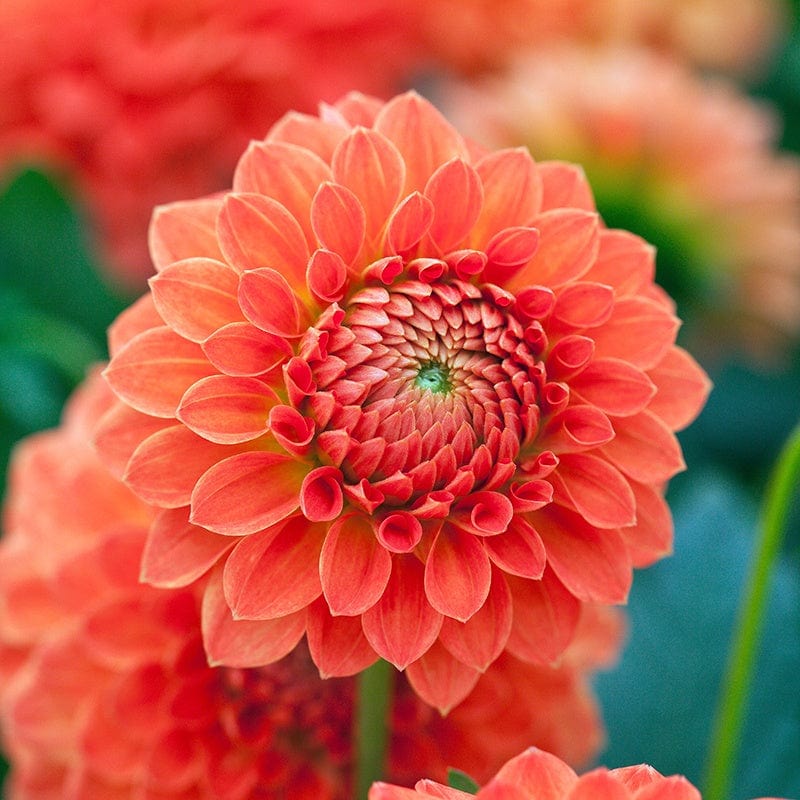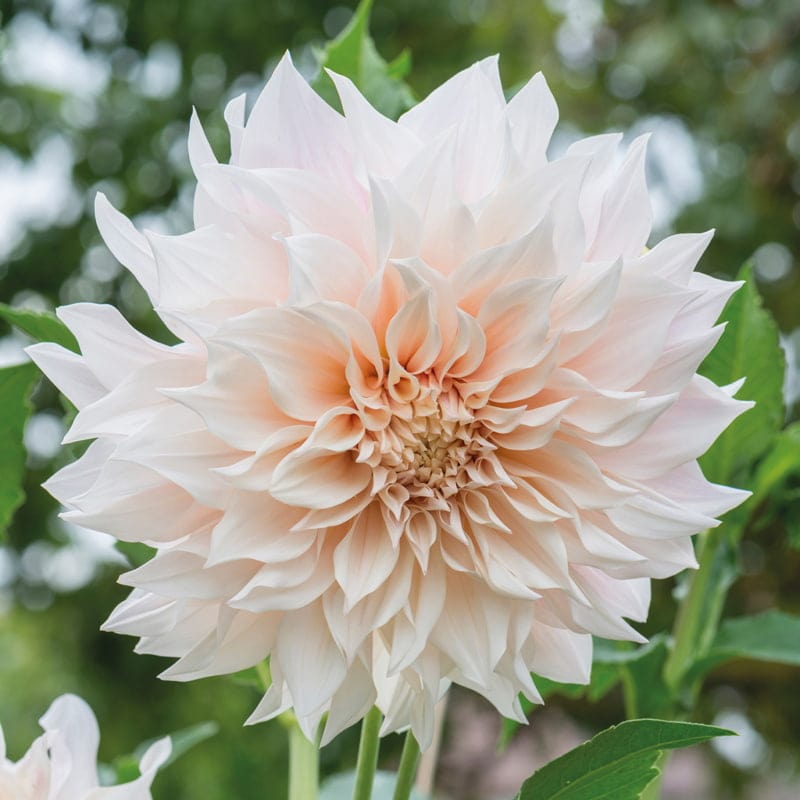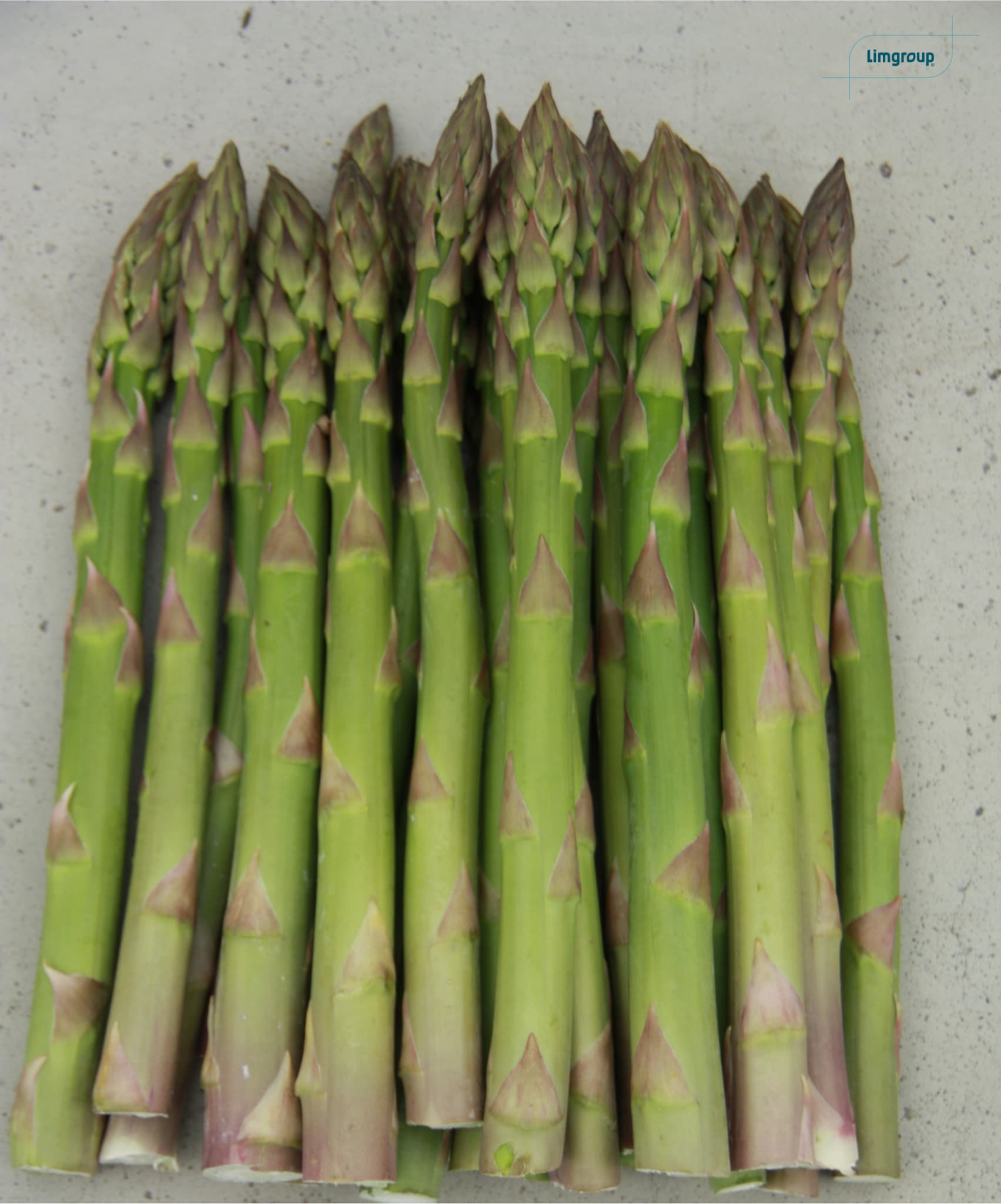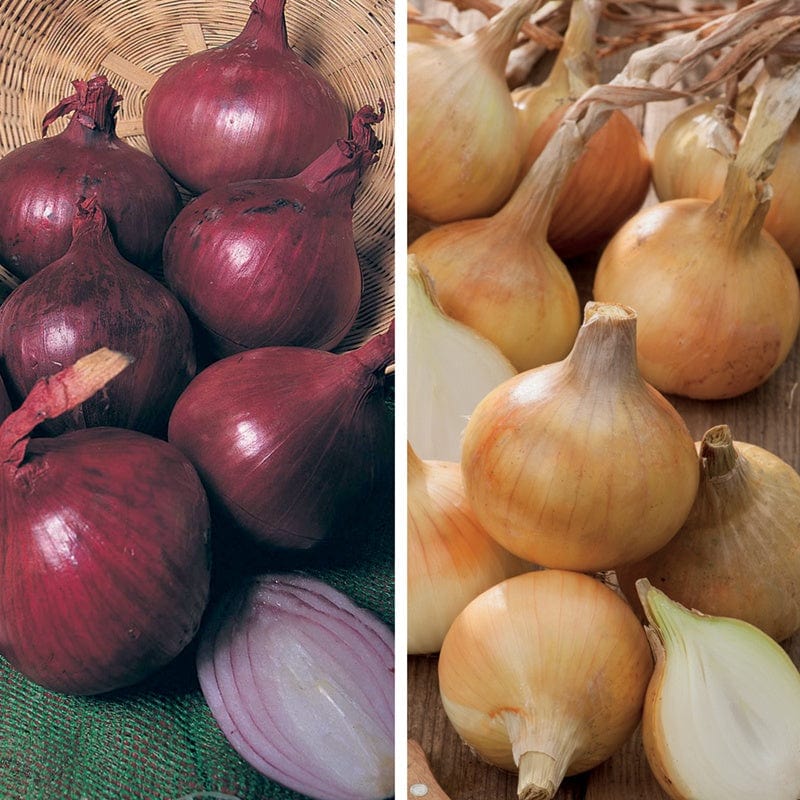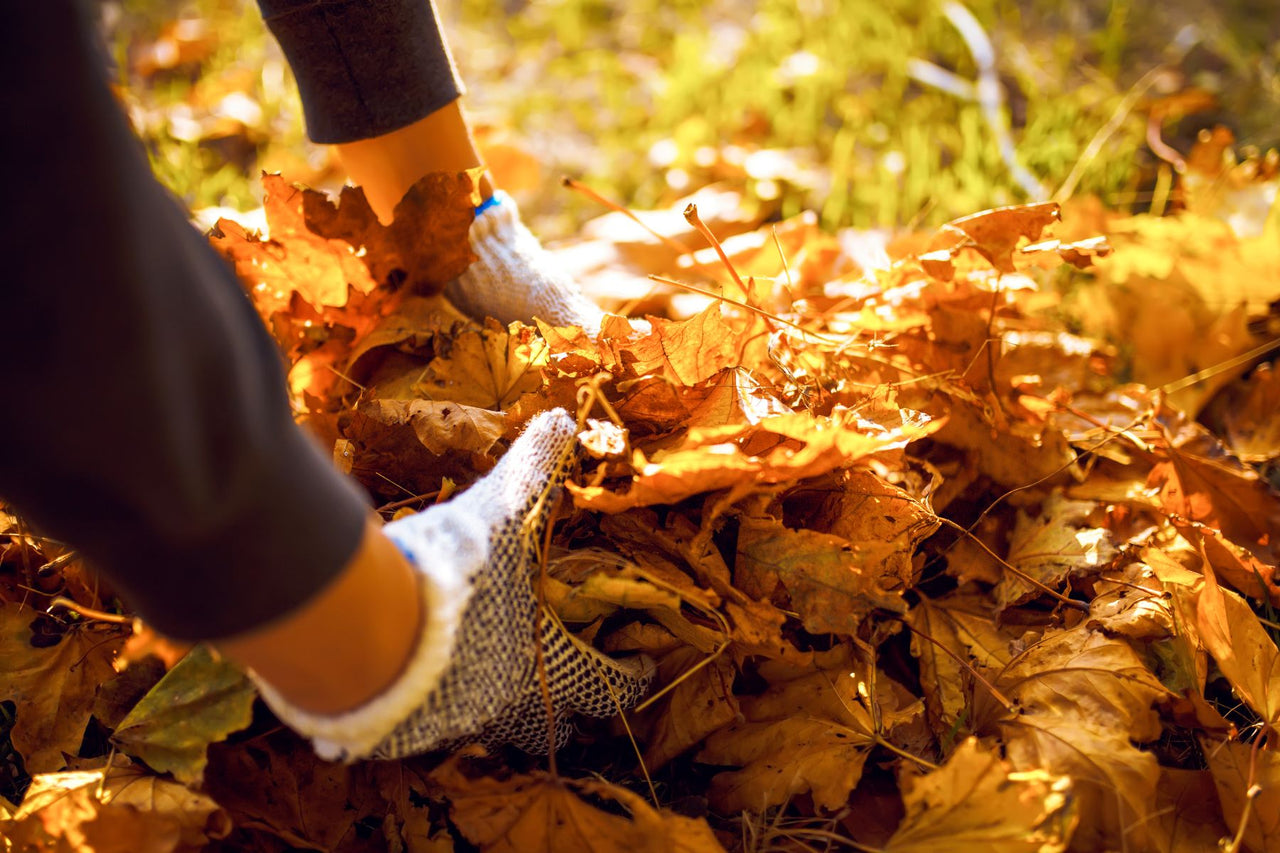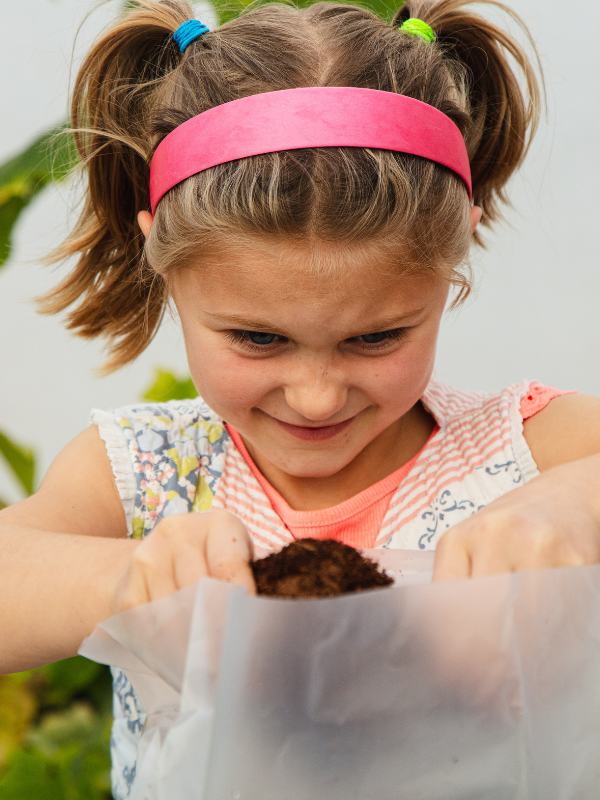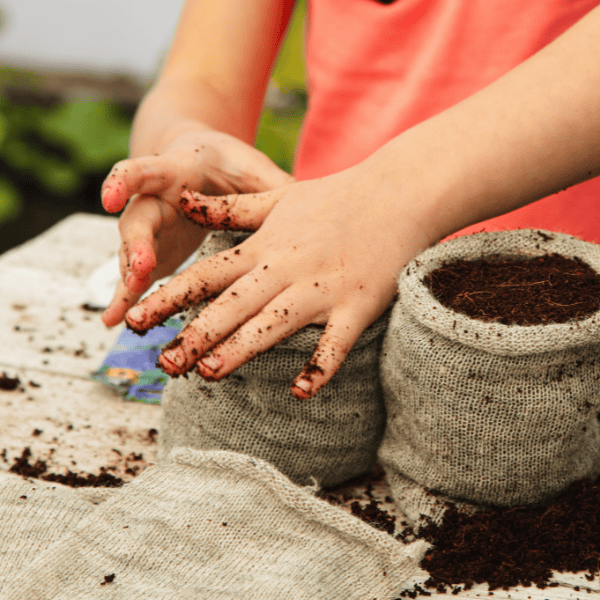As summer starts to edge gently into autumn during September, misty mornings give way to plenty of still-warm days, even if conditions remain overcast rather than sunny for much of the time.
Nights may be drawing in, and winter may be around the corner, but there are plenty of timely tasks to keep you busy in the garden through October. In fact, while many concentrate on shutting down the garden until next spring, this is a key month for establishing new planting displays.
Spend time this month planting out new perennials, trees, shrub plants and you’ll be rewarded with a stronger performance from next spring onwards. Surprisingly perhaps, a wide range of seeds can be sown both for the flower border and the veg patch, all with the inbuilt hardiness to make it through the winter for earlier results next year. But let’s start with what to do in the garden in October before you even think about sowing and planting!
What to Do in the Flower Garden in October
Autumn brings cooler temperatures, so give tender plants winter protection and bring them indoors. Cannas are not made for colder weather, so find a spot in your greenhouse or shed, where it’s light and frost-free. Cut away dead flowers and leaves, as this will help prevent rot. For further protection wrap fleece or bubble wrap, around the plant and tie in gently to keep it in place.
- Leave shabby perennial plants unchecked to benefit wildlife - both as a food source and somewhere to shelter. Also, they can offer structural interest in your garden throughout winter.
- Increase your stock of summer flowering perennials - lift, divide, and replant. Water in and apply a thick mulch around the plants to protect them in the colder months ahead. Don’t cover plants over as this can cause them to rot.
- For large floral displays next year, sow poppy seeds, marigold seeds, and aquilegia seeds into your container garden, and cover over lightly with soil and water. Keep them in a greenhouse, cold frame or on a windowsill, check them regularly and don’t let the soil dry out.
- Direct sow larkspur and cornflower seeds for a welcome addition to any green space.
- Sow wildflower seeds to give you a head start for next year.
- Plant out perennial and biennial seedlings, such as foxglove seeds and hollyhocks into their final growing positions. The soil is still warm, so they’ll have enough time to lay roots and become established before the colder weather arrives.
What Should I Do with My Bedding Plants in the Autumn?
Exhausted and gone to seed, summer bedding plants have had their moment in the sun. Remove and clear weeds and freshen the area with a layer of compost. For winter colour, consider planting cyclamen, polyanthus and primrose. Whether it’s flower beds, borders, pots, containers or hanging baskets, these plants can fill your winter months with rich colour, seeing you right through to next spring.
Sowing Sweet Peas in Autumn
Wondering what to plant in October? Well, we always like to begin October by looking at sowing sweet pea seeds - and we make no apology! To many keen growers of this favourite annual, this is the start of the sweet pea season with seed being sown either in pots to over-winter in a cold frame or greenhouse or directly in the garden in the plants’ flowering position. Many sweet pea enthusiasts make their sowings during the first fortnight of the month, but there is no hard-and-fast rule about this. Late September through to mid-November is the ‘window’ in which many people sow their seed.
Browse our range of sweet pea seeds and take a pick of what you fancy in your garden this season.
Sowing Hardy And Half-Hardy Annuals In October
It’s never too soon to start thinking about next year’s display of hardy annuals either, so why not direct-sow calendula seeds, nigella seeds, candytufts seeds, and cornflowers during October?
The soil will still be warm, so seedlings will germinate quickly and make enough growth before any hard frosts arrive later in the year to see themselves through the winter, bursting into flower early next summer considerably earlier than seedlings produced from spring-sown seed. If you have never tried this method before, it really is well worth a go!
As half-hardy annuals, bedding and container plants start to fade, pull these up and add them to the compost heap. They can be replaced either by pansy seeds, viola seeds, primrose seeds, and polyanthus seeds, which will all give a welcome splash of colour during milder winter spells, or by spring-flowering bulbs such as daffodil bulbs and hyacinth bulbs. Dwarf daffodils are particularly versatile because they look great in beds and at the front of borders and are also perfect for planting in containers close to the house. Remember to plant a tub or two of hyacinths near the house too, so you can appreciate their heady perfume every time you come out of the door next March and April.
If dahlias are still flowering into October, keep removing any dead-heads to encourage them to keep on blooming until they are cut down by the first frosts of autumn. No need to lift the tubers until the foliage has been blackened by a hard frost or two. And only store sound specimens, keeping them somewhere dry, cool and frost-free over the winter.
What Should I Do with Hardy Perennials in October?
Hardy perennials can be cut back during October to within a few inches of the ground. Discard the cut stems and any foliage strewn around the plants, as this will discourage pests and diseases which may otherwise lurk there during the winter.
Once dahlia foliage has been blackened by the first one or two frosts, carefully lift the tubers with a fork, as you would potatoes, leave three or four inches of stem and store them somewhere dry, cool, but frost-free until you want them to burst into growth again next spring.
As buddleias finish flowering, it is advisable to cut them back to around half their height so they do not become rocked by autumn and winter gales, causing them to become loose in the soil. Next March they can be cut back much closer to the ground to encourage new growth and plenty of butterfly-attracting blooms.
Divide Your Perennials in October
As summer-flowering herbaceous perennials start to die down and move into their dormant phase it is a perfect time to lift and divide them. Not only will you get more plants to fill other areas of the garden, it will help avoid congestion and maintain health and vigour, for the best performance next year. Here are some simple tips for easy plant division:
- Using a garden fork, aim to lift as much root mass as possible with minimal damage to the roots. Shake off excess soil or wash it away so you can see what you are working with.
- Some plants produce individual plantlets that can be teased apart and re-planted or potted.
- Others with small fibrous roots are best pulled apart gently by hand to create small clumps for replanting.
- Those with thicker fibrous roots can be pulled apart by inserting two forks, back to back, into the centre of the crown. Push the handles together to create a levering action to break the root mass apart. Really congested, dense root masses can be divided using a sharp knife or saw.
- Plants should be replanted or potted immediately and water well
How to Protect Perennials for the Winter
As perennials are cut back ahead of winter or divided for more stocks, it pays to provide the exposed crowns with some winter protection. A mulch of garden compost or similar will help to protect the dormant crowns from winter damage. If the plant in question dies back fully, it can be fully covered with mulch. If it dies back to a basal rosette of leaves, these should be surrounded by mulch but left uncovered on top.
Any borderline hardy perennials such as penstemon, phygelius, and salvia should be mulched, but their spent top growth should be kept in place until spring as extra winter protection for the crowns below.
What Flowers Should I Plant in October
If you’re unsure what to plant in October, it’s the perfect month for setting out traditional mixed spring displays of flower bulbs and bedding. Most summer-flowering bedding and container plants will be ‘going over’ this month and can be lifted and composted. Once the ground is clear and has been forked over, why not plant some spring-flowering bulbs? This is the month!
Pansies, violas, primroses, bellis daisies, wallflowers, and forget-me-nots all offer effortless colours for the year's colder months. Hyacinths, daffodils (narcissi), and croci (we still use the old-fashioned plural!) can also be planted during October.
What to Do in the Vegetable Garden in October
We particularly enjoy October in the vegetable garden, as this is when traditional winter vegetables are just becoming ready to harvest. Parsnip seeds,leek seeds, Brussels sprout seeds, savoy cabbage seeds, and kale seeds now take over from summer crops of runner bean seeds and French bean seeds, courgette seeds and sweet corn – and are every bit as eagerly anticipated.
We know you can buy so many vegetables all year round from the supermarkets, but we sometimes wonder where the fun is in that! As a certain book tells us, ‘To every thing, there is a season’, and this is definitely the season for parsnips and Brussels sprouts!
- Your runner beans will just about be over now, so they can also be pulled up and composted.
- Maincrop carrots can continue to be lifted as required.
- There is still time to plant garlic, shallots and over-wintering onion sets in the garden in October to provide an early crop next summer. Once planted, they require very little attention, but be sure to keep weeds to a minimum. They are much more susceptible to poor drainage than they are to low temperatures and, given good drainage, they are hardy even in very cold winters. Garlic generally produces heavier and better crops from an autumn planting than a spring one.
- Lift any remaining maincrop potatoes still in the ground as soon as possible to save from slug or frost damage. The tubers can then be lifted as needed over the next month or so. Ideally, The crop should be lifted and stored ahead of prolonged frosts and severe winter weather.
- Once the tops of Jerusalem artichokes start to turn yellow, the plants can be cut back virtually to the ground, chopped up and added to the compost heap. This leaves the tubers beneath the soil to be harvested as required in the weeks ahead.
- Basil, parsley, and coriander are not frost-hardy. Therefore, pot them up and bring them inside. Place them on a warm, well-lit windowsill in the kitchen, where they will continue to grow and be used in various meals.
- If you have lingering tomato plants under glass that are slow to ripen, you can speed up the process by stripping all the foliage from the plants.
- If any parts of the garden or allotment are currently fallow after earlier crops have been harvested, sow green manure. We offer crimson clover and winter grazing rye, among others.
Harvesting Pumpkins
If you are growing squashes, marrows, and pumpkin seeds, cut them and bring them in before the first frosts arrive. Pumpkins and squashes should be left in the greenhouse or cold frame for a week or two to ‘cure’ before being put into storage. Pumpkins will be in demand from youngsters as Halloween approaches at the end of the month.
What Vegetables To Plant in October UK
- Try sowing winter lettuce, such as lamb’s lettuce or winter gem, in a greenhouse or outside under cover.
- For spring brassicas, including cauliflower and spring cabbage, sow now and keep them in cold frames for planting out early next year.
- October means it’s also time to sow broad bean seeds and look forward to that early crop next May. Aguadulce is a splendid choice, as is Bunyards Exhibition. In colder areas, the seed and seedlings will benefit from a little fleece protection. Aguadulce produces small, fine beans of lovely quality and flavour, while Bunyards generally gives larger beans and one or two more per pod.
- Garlic needs an extensive cold period to help develop its cloves. Don’t be tempted to use bulbs from a supermarket, as they may harbour disease. Instead, buy them from a garden centre or online supplier. Read our article on how to plant and look after your alliums.
What to Do in the Fruit Garden in October
October is a perfect month for planting out new container-grown top fruit and soft fruit, grapes, and nuts. Soils retain some of their summer warmth through the month, but moisture levels are on the rise thanks to autumn rain. This creates the perfect conditions for early root establishment and also reduces the level of watering needed during the critical early stages of establishment. Watering may be needed in prolonged dry spells next year, but winter wet will have done a large part of the settling-in process for you.
- Harvest the last of your hanging fruit, such as apples and pears. What isn’t going to be used straight away can be stored. Ideally, use slatted shelves or boxes and space the fruit carefully on them.
- Check that each fruit is not bruised or damaged, and try not to let them rest on one another.
- Keep in a frost-free, cool, dark, well-ventilated room, such as a larder or cellar. Check regularly and remove any that have spoiled.
- Rhubarb crowns can be lifted, divided, and re-planted. Using a sharp spade, divide the crown, ensuring each section contains at least one growing point. Re-plant in well-drained, fertile soil, keeping the crowns well-spaced. This helps avoid congestion, maintain health and vigour, and improve ongoing stalk production to get more plants!
What to Do in the Greenhouse in October
Whether you are growing tomatoes, peppers, cucumbers, or aubergines in the greenhouse, it is a good idea to pick all you can this month and discard the plants. By the end of the month, it should be possible to clean the greenhouse out with warm water and a proprietary disinfectant to ensure it does not harbour any diseases through the winter.
- Remove shade paint and netting to maximise light levels
- Have a general sweep down of all surfaces
- Disinfect benches, pots and tools
- Check that the heaters are ready for use and fit the bubble wrap insulation
- Open doors and vents still on sunny days, but close up again before the late afternoon
What to Do in the Garden in October
Just when you thought we’d covered all of our bases, we’vegot even more things to keep you busy this October!
- Houseplants that have enjoyed recent warm outside temperatures should now be brought indoors. Let them slowly acclimatise to the indoor heat; otherwise, the shock may damage them.
- For empty veg beds this winter, sow green manures to improve soil structure and fertility for next spring.
- Insulate your greenhouse with bubble wrap to keep heating costs down. As the daytime temperature decreases, keep doors and vents closed.
- Fill your bird feeders and hang fat balls. With cold days ahead, your garden birds will need all the help they can get.
- Get the children involved and carve your pumpkins for Halloween. Make sure you don’t waste the flesh; pumpkins make tasty autumn soups and risotto!
Transition from Summer to Autumn
October is a month when the seasonal baton is finally handed over to autumn. Gardens look weary, plants retreat into the comfort of the soil and daylight hours finally succumb to the increasing darkness, bringing with it colder temperatures. However, this is also a month of harvests, as we make cosy meals from our precious produce to be shared and enjoyed. And what isn’t immediately eaten is stored, jammed and preserved for the cold months ahead.
So, enjoy the weeks ahead with brisk country walks on newly fallen leaves, and raise a mug of homemade soup to the harvest season.
Buy Seeds at Mr Fothergill’s
What are you waiting for? Your growing journey starts right here at Mr Fothergill’s! Shop our fantastic range of seeds today and let us help get your family garden growing.
If you have any further questions about what to plant in September or have any curiosities about any of our products, don’t hesitate to contact us or take a deeper dive into our gardening blog!












